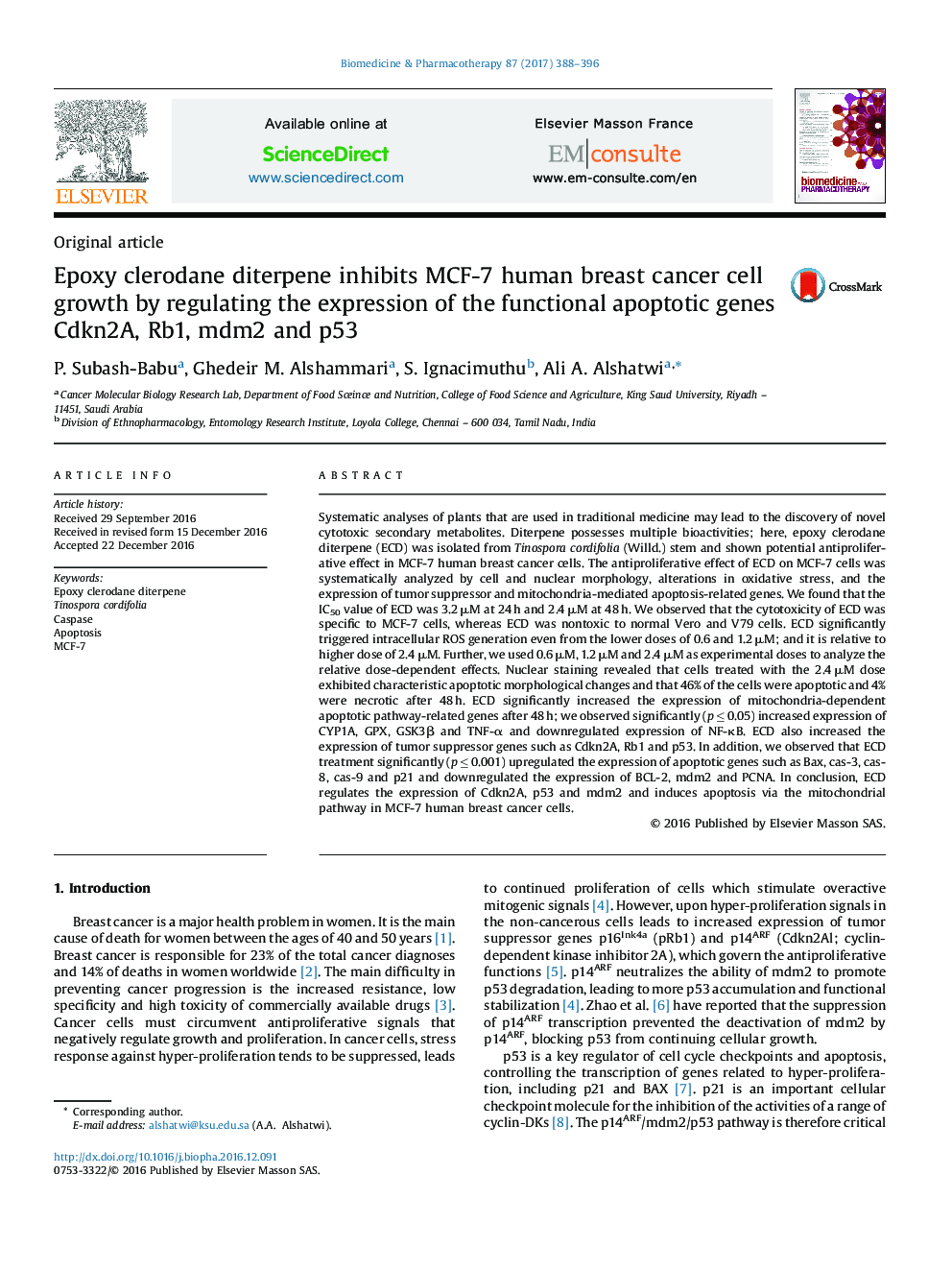| Article ID | Journal | Published Year | Pages | File Type |
|---|---|---|---|---|
| 5553458 | Biomedicine & Pharmacotherapy | 2017 | 9 Pages |
Systematic analyses of plants that are used in traditional medicine may lead to the discovery of novel cytotoxic secondary metabolites. Diterpene possesses multiple bioactivities; here, epoxy clerodane diterpene (ECD) was isolated from Tinospora cordifolia (Willd.) stem and shown potential antiproliferative effect in MCF-7 human breast cancer cells. The antiproliferative effect of ECD on MCF-7 cells was systematically analyzed by cell and nuclear morphology, alterations in oxidative stress, and the expression of tumor suppressor and mitochondria-mediated apoptosis-related genes. We found that the IC50 value of ECD was 3.2 μM at 24 h and 2.4 μM at 48 h. We observed that the cytotoxicity of ECD was specific to MCF-7 cells, whereas ECD was nontoxic to normal Vero and V79 cells. ECD significantly triggered intracellular ROS generation even from the lower doses of 0.6 and 1.2 μM; and it is relative to higher dose of 2.4 μM. Further, we used 0.6 μM, 1.2 μM and 2.4 μM as experimental doses to analyze the relative dose-dependent effects. Nuclear staining revealed that cells treated with the 2.4 μM dose exhibited characteristic apoptotic morphological changes and that 46% of the cells were apoptotic and 4% were necrotic after 48 h. ECD significantly increased the expression of mitochondria-dependent apoptotic pathway-related genes after 48 h; we observed significantly (p â¤Â 0.05) increased expression of CYP1A, GPX, GSK3β and TNF-α and downregulated expression of NF-κB. ECD also increased the expression of tumor suppressor genes such as Cdkn2A, Rb1 and p53. In addition, we observed that ECD treatment significantly (p â¤Â 0.001) upregulated the expression of apoptotic genes such as Bax, cas-3, cas-8, cas-9 and p21 and downregulated the expression of BCL-2, mdm2 and PCNA. In conclusion, ECD regulates the expression of Cdkn2A, p53 and mdm2 and induces apoptosis via the mitochondrial pathway in MCF-7 human breast cancer cells.
